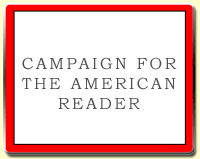 At io9 Katharine Trendacosta and Charlie Jane Anders came up with a list of ten sources that inspired Game of Thrones' dark storytelling, including:
At io9 Katharine Trendacosta and Charlie Jane Anders came up with a list of ten sources that inspired Game of Thrones' dark storytelling, including:J.R.R. Tolkien's Lord of the RingsRead about the other entries on the list.
You probably won't be surprised to hear that Martin borrowed a lot from Tolkien for his epic fantasy series. Both the idea of a "secondary world," in which certain things (like the seasons) are very different, but also the initial structure. Tolkien was "my great model" for the handling of the characters in Song of Ice and Fire, Martin has said. Lord of the Rings "begins with a tight focus, and all the characters are together. Then by end of the first book the Fellowship splits up, and they have different adventures." Apart from Daenerys, all of Martin's characters are together in his first book, and they all split into groups, which eventually split up as well. Adds Martin: "The intent was to fan out, then curve and come back together. Finding the point where that turn begins has been one of the issues I’vewrestled with." Another major influence from Tolkien: the restrained use of magic. You don't see Gandalf casting a lot of spells or throwing fireballs in the Lord of the Rings saga. When there's danger, Gandalf mostly pulls out his sword.
The Lord of the Rings also made Rob Bricken's list of 11 preposterously manly fantasy series, Conrad Mason's top ten list of magical objects in fiction, Linus Roache's six best books list, Derek Landy's top ten list of villains in children's books, Charlie Jane Anders and Michael Ann Dobbs' list of ten classic SF books that were originally considered failures, Lev Grossman's list of the six greatest fantasy books of all time, and appears on John Mullan's lists of ten of the best women dressed as men, ten of the best bows and arrows in literature, ten of the best beards in literature, ten of the best towers in literature, ten of the best volcanoes in literature, ten of the best chases in literature, and ten of the best monsters in literature. It is one of Salman Rushdie's five best fantasy novels for all ages. It is a book that made a difference to Pat Conroy.
--Marshal Zeringue



